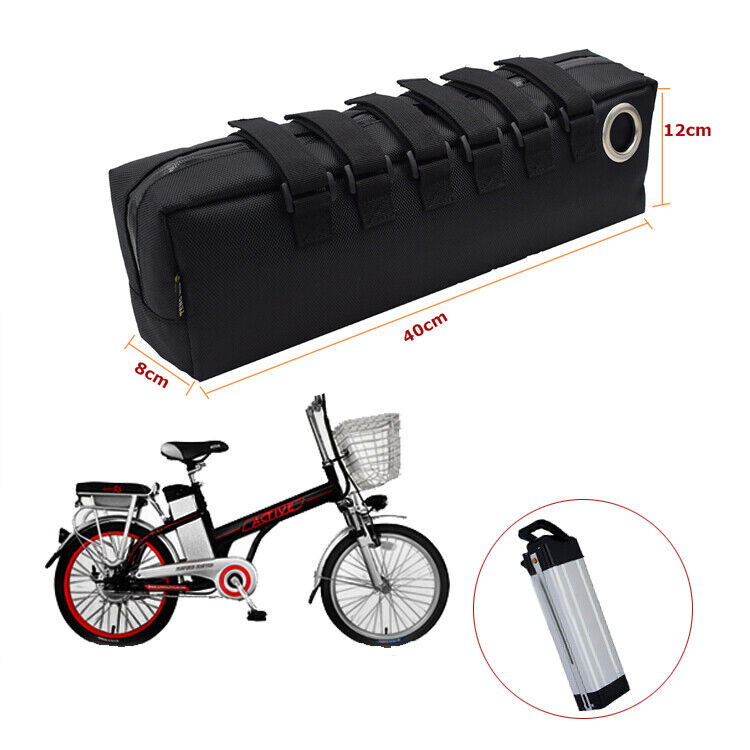Embarking on your thrilling outdoor adventures with your E-bike can be an exemplary fusion of fun and fitness. However, the true challenge lies in the management of your E-bike’s battery, especially when it comes to storing it. Understanding the basics for safe and efficient E-bike battery storage is key to optimizing the longevity and performance of your battery, ultimately enhancing your overall E-bike experience. Amp up your knowledge about this crucial component as you set out for trail riding, camping, and more!

This image is property of images.pexels.com.
Understanding the Structure of an E-bike Battery
E-bike batteries are the heart of your electric bicycle. They supply the necessary power to the motor, which in turn drives the bike. Having a sound understanding of your e-bike battery can go a long way in ensuring its longevity and optimal performance.
The components of an e-bike battery
Your e-bike battery isn’t just a single unit but constitutes multiple components. These include the cells, which are the basic energy storage units, a Battery Management System (BMS) that controls the operation and safety of the battery, the protective casing, and sometimes, a small circuit board for communication with the bike’s display. Understanding these components can help you assess your battery’s health and know when maintenance is needed.
Functioning of e-bike batteries
E-bike batteries function by storing and converting energy. The stored energy, in the form of chemical energy, is converted into electrical energy when you power the bike. This electricity then runs the motor, which propels the e-bike. The batteries are rechargeable and are rated in terms of voltage and amp-hours, which together determine the energy capacity or ‘range’ of the bike.
Different models of e-bike batteries
There exist several types of e-bike batteries, with the three most common being Lithium-Ion (Li-ion), Nickel Metal Hydride (NiMH), and Lead Acid batteries. Li-ion batteries are the most popular as they are lightweight, have a high energy density, and long cycle life. NiMH batteries, on the other hand, are typically more expensive and have a shorter lifespan. Lead Acid batteries are heavier, cheaper, and have the shortest life expectancy of the three.
The Importance of Proper Battery Storage
As critical as the battery’s role is during a ride, equally vital is its care during storage. Taking care of your e-bike battery when not in use can significantly impact its performance and lifespan.
Preservation of battery health
Storing your battery correctly helps preserve its health. It prevents chemical degradation of the cells, maintains electrical properties, and prevents any physical harm that could impair its function. Over time, this can translate into better performance and a longer battery lifespan.
Safety considerations and risks
Safety considerations are another reason why proper storage is paramount. Bad storage situations can potentially cause overheating or short circuiting, which can lead to a fire. Additionally, exposure to extreme temperatures or moisture could also physically damage the battery or speed up its chemical degradation.
Impact on battery longevity
Suppose the e-bike battery is not properly stored. In that case, it can undergo faster degradation, decreasing its overall lifespan and leading to frequent replacements. The associated costs and outings can quickly add up, so from a cost perspective, it’s wise to store your battery correctly.
Preparation for Storage
Before storing your battery, it’s crucial to prepare it correctly. Here are some steps to ensure your battery is readiness for storage.
Checking the battery health
Checking the e-bike battery’s health before storage can help identify any issues that might hamper its life during storage. This can involve checking the battery voltage, capacity, and any visible signs of damage.
Proper cleaning of the battery
Before storing the e-bike battery, make sure to clean it thoroughly. Use a slightly damp cloth to remove any dust or dirt. Avoid using harsh chemicals or abundant water as it could cause damage.
Ensuring the battery is fully charged before storage
Before storing, it’s crucial to ensure that the e-bike battery is fully charged. A battery stored without being fully charged can lose its capacity over time due to self-discharge.
Controlled Storage Environment
Storing an e-bike battery in a controlled environment can play a crucial part in preserving its life and ensuring safe storage.
Selection of an appropriate storage location
Choose a cool and dry place to store your e-bike battery. Avoid places with high humidity or temperature variations. Your garage, for example, can be a good choice, provided it’s insulated and not subjected to extreme weather changes.
Parameters of temperature control
Temperature plays a significant role in e-bike battery preservation. The ideal temperature range for most e-bike batteries is between 20ºC and 25ºC. Exposure to temperatures outside this range can potentially cause damage and decrease the battery’s lifespan.
Protection from moisture and dampness
Moisture and dampness can be detrimental to your e-bike battery. Excess moisture can lead to corrosion of the battery contacts and the growth of mold, which can damage the battery significantly. So, ensure that the storage area is moisture-free.

This image is property of images.pexels.com.
Regular Battery Maintenance during storage
Even in storage, your e-bike battery requires regular maintenance to keep it in top working condition and prolong its lifespan.
Periodic battery check-ups
Periodically check your battery for any signs of damage or degradation. Verify the voltage and charge level, and if it falls below 30-40%, be sure to recharge it.
Regular charging/discharging routines
It’s common for batteries to self-discharge over time. To counteract this and maintain the battery’s health, it’s necessary to regularly charge and discharge the battery: a monthly check-up and charging should suffice.
Addressing battery deterioration signs early
If you notice any signs of deterioration during your periodic check-ups, evaluate if you can remedy them at the earliest. Don’t let the battery stay in a damaged state for long as it could lead to irreversible harm.
Storage during Off-Road Applications
Storing e-bike batteries for off-road applications like trail riding and camping requires some additional considerations given the more rugged environment and variable weather conditions.
Additional considerations for outdoor storage
Outdoor storage might expose your battery to elements like rain, snow, or heat, which could degrade its performance or damage it. So make sure to keep the battery protected with suitable coverings.
Impact of unstable weather conditions
Unstable weather conditions can significantly impact your e-bike’s battery longevity. Rapid temperature fluctuations or exposure to extreme temperatures can cause damage and potentially reduce the battery’s overall lifespan.
Protecting the battery from physical damage
Off-road applications might expose your battery to more physical stress than usual. To prevent physical damage, make sure to store the battery securely, away from any activity that might harm it.

This image is property of images.pexels.com.
Long-Term Storage Tips
If you’re planning to store your e-bike battery for an extended period, here are some tips to ensure its long-term safety and performance.
Steps for preparing your battery for long-term storage
Before you store your e-bike battery for the long-term, make sure to fully charge it. Check it over for any signs of damage, and ensure it’s clean. Store it in a cool, dry place, and ideally, remove it from the e-bike.
Importance of regular check-ups during long-term storage
During long-term storage, make sure to check your battery regularly. Once a month would be a good routine. Look out for any signs of damage, and recharge the battery if it has self-discharged significantly.
Potential risks of improper long-term storage
Improper long-term storage can reduce the lifespan of your e-bike battery and, over time, degrade its performance. It might also increase the risk of safety hazards like fire or chemical leakage. Therefore, invest your time in preparing and maintaining your battery for storage.
Unplugging and Detaching Battery for Storage
Detaching and unplugging your e-bike battery during storage can contribute significantly to its preservation.
Process of safely removing your battery
Before removing the battery, ensure the e-bike is turned off. It’s also advisable to first check the user manual of your e-bike for instructions on how to safely remove the battery to prevent any damage.
Advantages of detaching the battery during storage
Detaching your battery during storage can help extend its life. It reduces the risk of self-discharge and limits the exposure to possible damaging effects from the e-bike’s electronics. Additionally, it eases the regular battery inspection process.
Important points to remember when detaching
Remember to store your detached battery in a safe and secure manner. Keep it away from metal objects to prevent any accidental short circuits. Furthermore, ensure you don’t lose the key if your battery has a lock.
Overcoming Common Storage Challenges
While storing your e-bike battery, you may come across a few challenges. Let’s explore how you can overcome them.
Dealing with limited storage space
If you have limited storage space, consider investing in a battery storage bag. It can help you store the battery neatly and safely, even in small spaces.
Mitigating risk of theft during storage
To mitigate the risk of theft, ensure to store your e-bike battery in a secure location. Consider using lockable storage solutions and not storing the battery in plain sight.
Finding storage solutions during travels
If you travel frequently with your e-bike, consider investing in a storage bag that you can easily carry with you. This can ensure the battery stays safe during the journey and can be conveniently stored at your destination.
Choosing a Battery Storage Bag
A battery storage bag can be an excellent solution for organizing and preserving your e-bike battery.
The functionality of battery storage bags
Battery storage bags not only help in organizing your e-bike battery but also protect it from physical damage and harsh environmental factors. They are typically robust, durable, and designed to withstand all kinds of wear and tear.
Selecting the right size and material
Choosing the right size and material for your battery storage bag is crucial. Ensure the bag is just the right size for your battery – not too big, not too small. The material should be sturdy and durable, ideally waterproof, and offer good insulation against temperature fluctuations.
Tips to maintain a battery storage bag
Make sure to regularly clean the storage bag to prevent the build-up of dirt or moisture. Check regularly for any signs of wear and tear; immediate replacement is advised if any damage is identified to continue protecting your battery effectively.
In conclusion, in addition to understanding the structure of an e-bike battery, knowing how to properly store it is essential to prolong its lifespan and ensure safety. With the right preparation, storage location, routine maintenance, and storage solutions, you can keep your e-bike battery in top condition, ready for many more rides!

